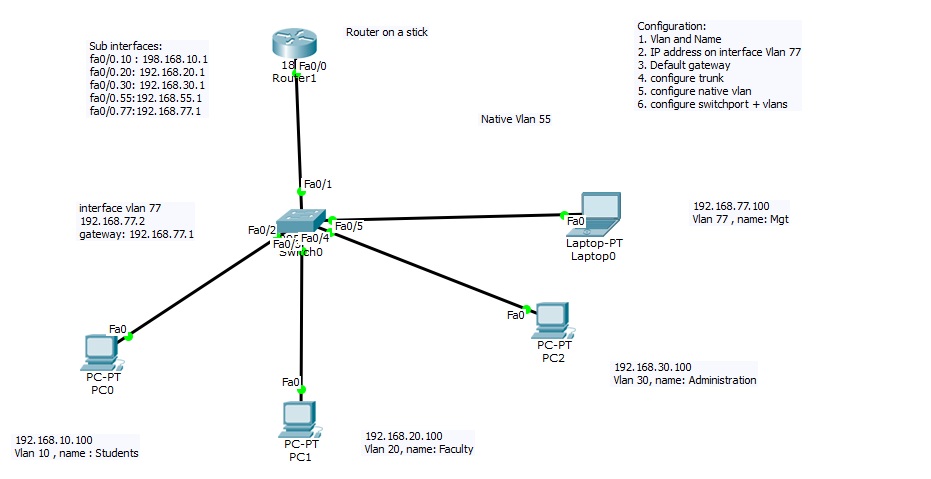

The Router doesn’t know that it has two connections to the same switch - nor does it need to. The simplest way to enable routing between the two VLANs to simply connect an additional port from each VLAN into a Router. The remainder of this article will explore these three options and their configuration. Router with a Sub-Interface in each VLAN.Router with a Separate Physical Interface in each VLAN.There are three options available in order to enable routing between the VLANs: In the same way, a Router is what we will need in order for hosts in different VLANs to communicate with one another. If you’ve read the Packet Traveling series, then you know that the device which facilitates communication between networks is a Router.Ī router will perform the routing function necessary for two hosts on different networks to speak to one another. However, if Host A is trying to speak to Host C, we will need to use another device – one whose purpose is to facilitate communication between networks. This works great for Host A trying to speak to Host B. The purpose of a Switch is to facilitate communication within networks. Each VLAN will typically correspond to its own IP Network. Since Host A and Host C are in different VLANs, it is also implied that they are in different Networks.


Notice since there is nothing connecting the two “virtual” switches, there is no way for Host A to speak to Host C. Despite all four hosts being connected to the same physical switch, the logical topology makes it clear that the hosts in VLAN 20 are unable to speak with the hosts in VLAN 30.


 0 kommentar(er)
0 kommentar(er)
